Create an Agile-Friendly Project Gating and Governance Approach
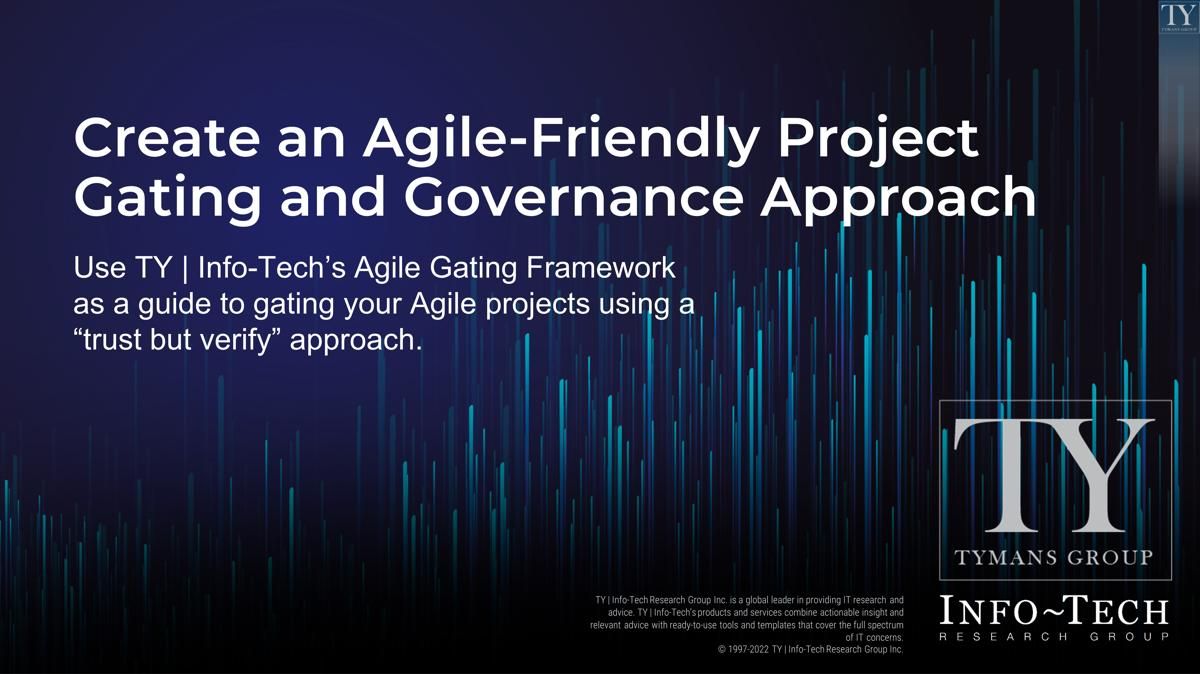
- Organizations often apply gating and governance to IT projects to ensure resources are being used efficiently and effectively.
- Agile project teams often complain that traditional project gating and governance interfere with their ability to delivery because traditional gating and governance were designed for Waterfall delivery methods.
Our Advice
Critical Insight
Imposing a traditional gating and governance approach on an Agile project can eliminate the advantages that Agile delivery methods offer. Make sure to rework your traditional project gating and governance approach to be Agile friendly.
Impact and Result
- Create a project gating and governance approach that is Agile friendly and helps your organization realize the most benefit from its Agile transformation.
- Oversee your Agile projects with confidence by adjusting the level of support and oversight they receive based on their Agilometer score.
- Define a revised set of project gating artifacts that support Agile delivery methods.
- Adopt a “trust but verify” approach to Agile project gating that will reduce risk and help ensure value delivery.
Create an Agile-Friendly Project Gating and Governance Approach Research & Tools
Besides the small introduction, subscribers and consulting clients within this management domain have access to:
1. Create an Agile-Friendly Project Gating and Governance Approach Deck – A step-by-step guide to creating an Agile-friendly project gating and governance approach that will support Agile delivery methods in your organization.
This deck is a guide to creating your own Agile-friendly project gating and governance approach using Info-Tech’s Agile Gating Framework.
- Create an Agile-Friendly Project Gating and Governance Approach – Phases 1-3
2. Your Gates 3 and 3A Checklists – The Gates 3 and 3A Checklists are used to determine when a project is ready to enter and exit the Risk Reduction & Value Confirmation phase.
Modify Info-Tech’s Gates 3 and 3A Checklists to meet your organization’s needs, and then use them to determine when Agile projects are ready to enter and exit the RRVC phase.
- Gates 3 and 3A Checklists
3. Your Agilometer – The Agilometer is used to determine a project’s readiness to use an Agile delivery method.
Modify Info-Tech’s Agilometer to meet your organization’s needs, and then use it to determine the level of support and oversight the project will need.
- Agilometer
4. Your Agile Project Status Report – An Agile Status Report will be used to monitor project progress.
Modify Info-Tech’s Agile Project Status Report to meet your organization’s needs, and then use it to monitor in-flight Agile projects.
- Agile Project Status Report
5. Project Burndown Chart – A tool to let you monitor project burndown over time.
Use Info-Tech’s Project Burndown Chart to monitor the progress of your in-flight Agile projects.
- Project Burndown Chart
6. Traditional to Agile Gating Artifact Mapping – A tool to help you rework your project gating artifacts to be Agile-friendly.
Use Info-Tech’s Traditional to Agile Gating Artifact Mapping tool to modify your gating artifacts for Agile projects.
- Traditional to Agile Gating Artifact Mapping
Further reading
Create an Agile-Friendly Project Gating and Governance Approach
Use Info-Tech’s Agile Gating Framework as a guide to gating your Agile projects using a “trust but verify” approach.
Table of Contents
Phase 1: Establish Your Gating and Governance Purpose
Phase 2: Understand and Adapt Info-Tech’s Agile Gating Framework
Analyst Perspective
Make your gating and governance process Agile friendly by following a “trust but verify” approach
Most project gating and governance approaches are designed for traditional (Waterfall) delivery methods. However, Agile delivery methods call for a different way of working that doesn’t align well with these approaches.
Applying traditional project gating and governance to Agile projects is like trying to fit a square peg in a round hole. Not only will it make Agile project delivery less efficient, but in the extreme, it can lead to outright project failure and even derail your organization’s Agile transformation.
If you want Agile to successfully take root in your organization, be prepared to rethink your current gating and governance practices. This document presents a framework that you can use to rework your approach to provide both effective oversight and support for your Agile projects.

|
Alex Ciraco
Principal Research Director, Application Delivery and Management Info-Tech Research Group |
Executive Summary
Your Challenge
|
Common Obstacles
|
Info-Tech’s Approach
|
Imposing a traditional governance approach on an Agile project can eliminate the advantages that Agile delivery methods offer. Make sure to rework your project gating and governance approach to be Agile friendly.
Info-Tech’s methodology for Creating an Agile-Friendly Project Gating and Governance Approach
| 1. Establish Your Gating and Governance Purpose | 2. Understand and Adapt Info-Tech’s Agile Gating Framework | 3. Complete your Agile Gating Framework | |
| Phase Steps |
1.1 Understand How We Gate and Govern Projects 1.2 Compare Traditional to Agile Delivery 1.3 Realize What Traditional Gating Looks Like and Why |
2.1 Understand How Agile Manages Risk and Ensures Value Delivery 2.2 Introducing Info-Tech’s Agile Gating Framework 2.3 Create Your Agilometer 2.4 Create an Agile-Friendly Project Status Report 2.5 Select Your Agile Health Check Tool |
3.1 Map Your Traditional Gating Artifacts to Agile Delivery 3.2 Determine Your Now, Next, Later Roadmap for Implementation |
| Phase Outcomes |
|
|
|
Key Deliverables
Each step of this blueprint is accompanied by supporting deliverables to help you accomplish your goals, including:
Agilometer ToolCreate your customized Agilometer tool to determine project support and oversight needs. |
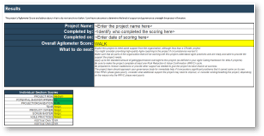
|
Gates 3 and 3A ChecklistsCreate your customized checklists for projects at Gates 3 and 3A. |
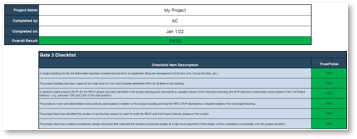
|
Agile-Friendly Project Status ReportCreate your Agile-friendly project status report to monitor progress. |
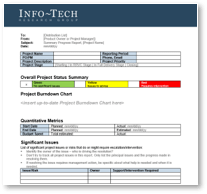
|
Artifact Mapping ToolMap your traditional gating artifacts to their Agile replacements. |
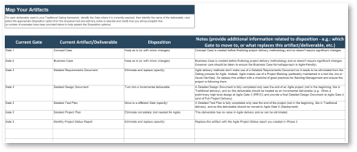
|
Create an Agile-Friendly Project Gating and Governance Approach
Phase 1
Establish your gating and governance purpose
| Phase 1 1.1 Understand How We Gate and Govern Projects 1.2 Compare Traditional to Agile Delivery 1.3 Realize What Traditional Gating Looks Like And Why | Phase 2 2.1 Understand How Agile Manages Risk and Ensures Value Delivery 2.2 Introducing Info-Tech’s Agile Gating Framework 2.3 Create Your Agilometer 2.4 Create Your Agile-Friendly Project Status Report 2.5 Select Your Agile Health Check Tool | Phase 3 3.1 Map Your Traditional Gating Artifacts to Agile Delivery 3.2 Determine Your Now, Next, Later Roadmap for Implementation |
This phase will walk you through the following activities:
- Understand why gating and governance are so important to your organization.
- Compare and contrast traditional to Agile delivery.
- Identify what form traditional gating takes in your organization.
This phase involves the following participants:
- PMO/Gating Body
- Delivery Managers
- Delivery Teams
- Other Interested Parties
Agile gating–related facts and figures
| 73% of organizations created their project gating framework before adopting or considering Agile delivery practices. (Athens Journal of Technology and Engineering)
71% of survey respondents felt an Agile-friendly gating approach improves both productivity and product quality. (Athens Journal of Technology and Engineering) |
Moving to an Agile-friendly gating approach has many benefits:
|
Traditional gating approaches can undermine an Agile project
|
Don’t make the mistake of asking an Agile project to follow a traditional phase-gate approach to project delivery! |
Before reworking your gating approach, you need to consider two important questionsAnswering these questions will help guide your new gating process to both be Agile friendly and meet your organization’s needs
|
|
Buying Options
Create an Agile-Friendly Project Gating and Governance Approach
Client rating
Cost Savings
Days Saved
IT Risk Management · IT Leadership & Strategy implementation · Operational Management · Service Delivery · Organizational Management · Process Improvements · ITIL, CORM, Agile · Cost Control · Business Process Analysis · Technology Development · Project Implementation · International Coordination · In & Outsourcing · Customer Care · Multilingual: Dutch, English, French, German, Japanese · Entrepreneur
Tymans Group is a brand by Gert Taeymans BV
Gert Taeymans bv
Europe: Koning Albertstraat 136, 2070 Burcht, Belgium — VAT No: BE0685.974.694 — phone: +32 (0) 468.142.754
USA: 4023 KENNETT PIKE, SUITE 751, GREENVILLE, DE 19807 — Phone: 1-917-473-8669
Copyright 2017-2022 Gert Taeymans BV
